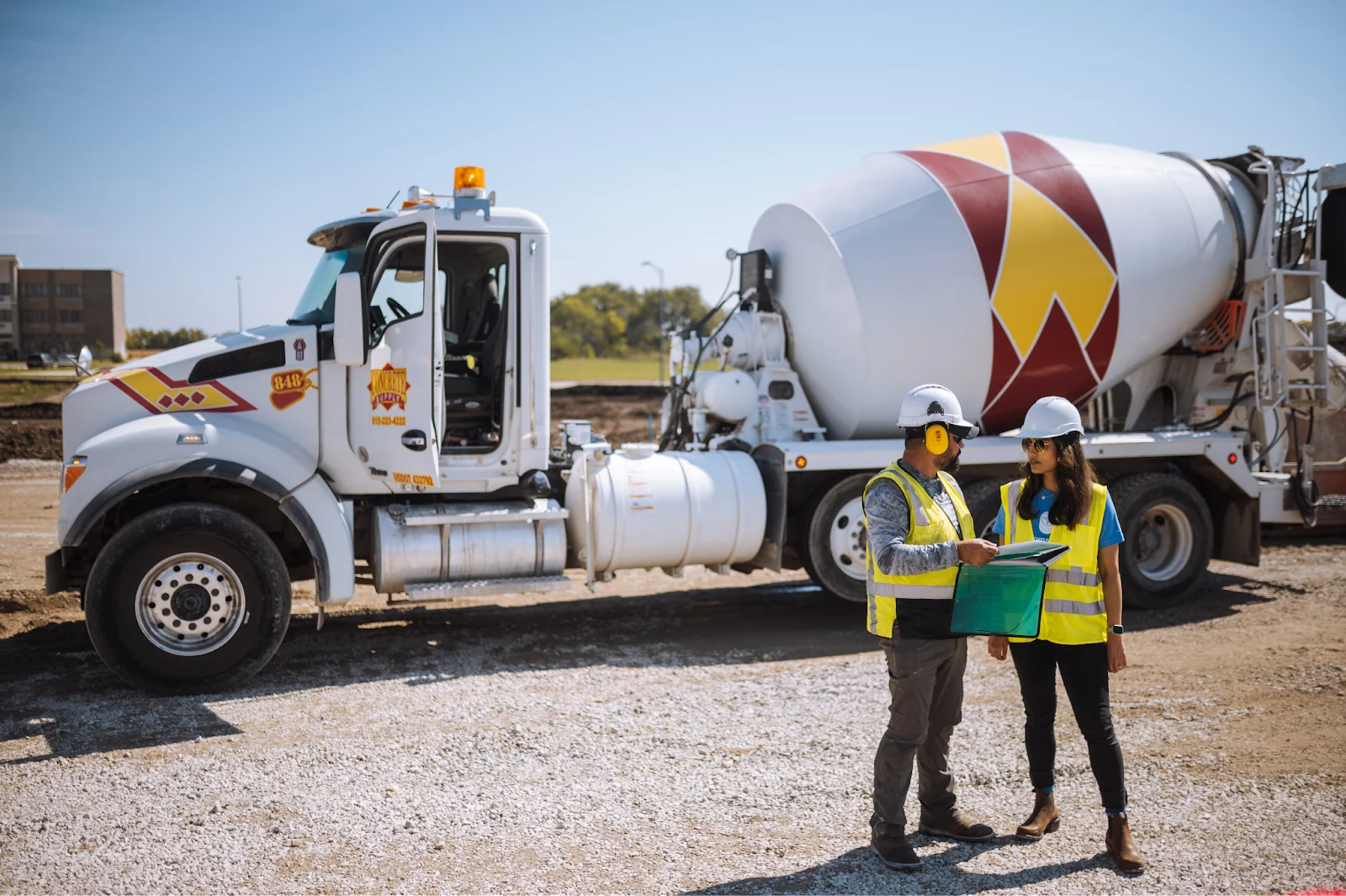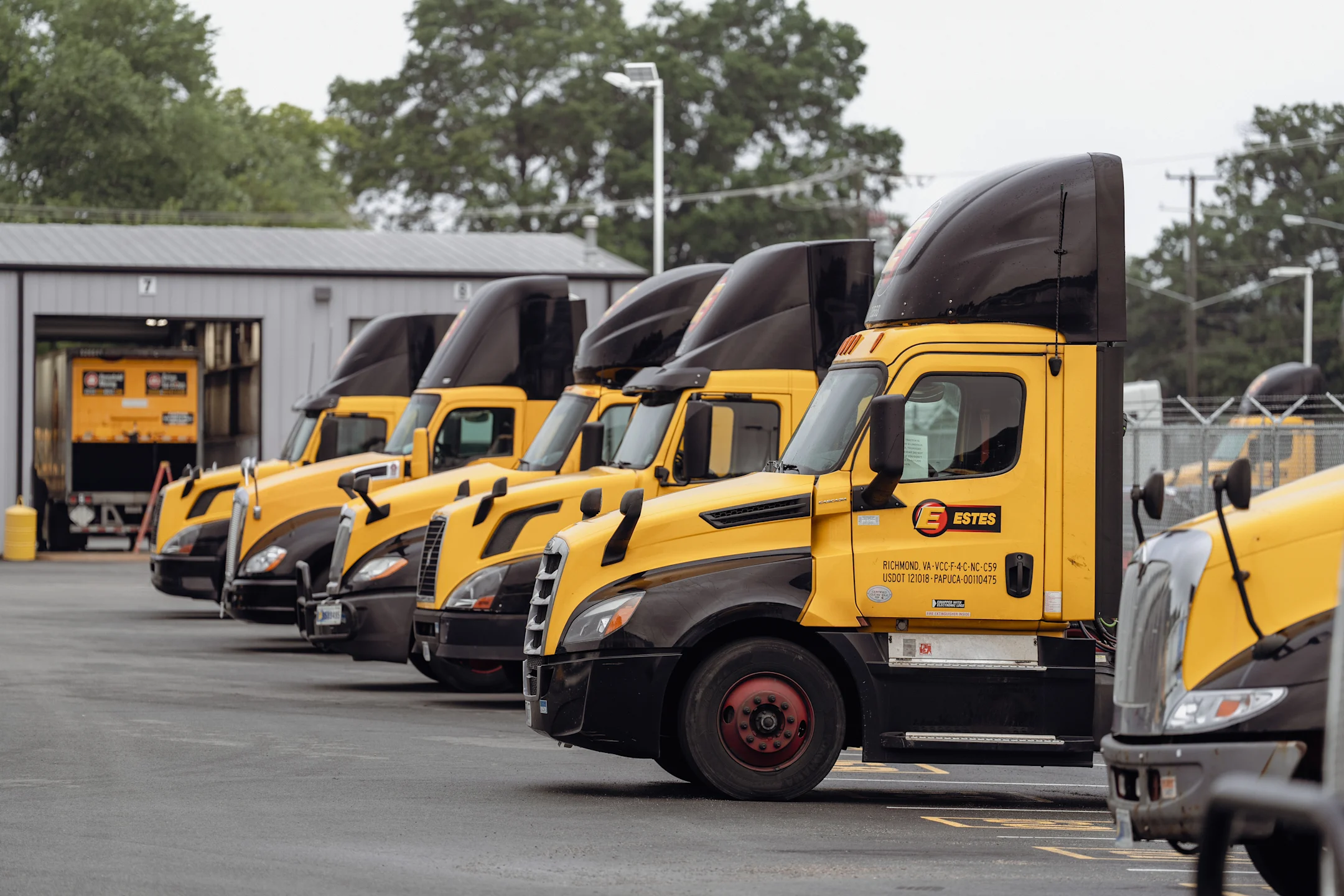What is telematics?
February 28, 2025

Get Started with Samsara
Check our pricesKey Takeaways
Telematics, or telematics systems, use telecommunications and informatics technology to monitor, manage, and optimize the operations of a vehicle fleet. Telematics leverages advanced technologies like GPS, sensors, and wireless networks to collect, transmit, and analyze data. Closely aligned with the Internet of Things (IoT), telematics software plays a crucial role in enabling real-time data exchange and facilitating applications for various purposes, including fleet management and vehicle tracking.
What is vehicle telematics?
In the automotive or fleet industry, telematics is typically synonymous with vehicle telematics or fleet telematics. Vehicle telematics is the use of telecommunications and informatics technology to monitor, manage, and optimize the operations of a vehicle fleet.
Vehicle telematics leverages vehicle onboard communication services and applications that communicate with one another via GPS receivers and other telematics devices. The most common application of this is GPS fleet tracking. This is typically achieved by combining a global positioning system (GPS) with onboard diagnostics, mapping the exact location of a vehicle and the speed at which it is moving through vehicle tracking.
Vehicle telematics continues to rise in popularity as a direct result of business demand and regulatory requirements. Fleets leverage telematics data to enhance operational efficiency and sustainability, such as reducing idling, while ensuring compliance with regulations like the ELD mandate.
How does telematics work?
Fleet telematics technology is critical to the operations of fleets across various industries. Based on the French word télématique, the term telematics gained traction in the United States in the 1970s and is now commonly used to refer to the intersection of information technology and telecommunications. Today, telematics technology has become an essential component of fleet operations management, making it possible to track every vehicle, improve efficiency, and enhance route performance.
Though telematics systems are extremely complex, here is an overview of how it works:
A vehicle telematics device, such as Samsara's Vehicle Gateway, captures data on vehicle location via a GPS tracker or general packet radio service (GRPS). Information is transmitted from the vehicle to a server via a wireless network. Some vehicle telematics systems also enable fleet managers to generate a geofence, which is a virtual perimeter for a real-world geographic area, to help monitor vehicle activity within a defined area.
A telecommunications company manages the flow of information from the vehicle and telematics provider.
With connectivity to the internet or Wi-Fi, the GPS navigation data is transferred from the telematics provider to a computer or mobile device for a fleet manager to access.
Fleet management for public fleets such as governments and schools use vehicle telematics technology to evolve into smart cities, leveraging data to improve safety and efficiency of their government operations. With vehicle telematics, public sector agencies can analyze fleet vehicles, vehicle location, service delivery and coverage, driver behavior, community safety, routing, dispatch units, diagnostics, and preventative maintenance, enabling them to optimize service delivery to their communities and respond to citizens.
What are the benefits of vehicle telematics?
There are a number of ways fleet managers can benefit from integrating a vehicle telematics system into their fleet operations. Some of the benefits include:
1. Visibility
GPS fleet tracking gives organizations visibility into the location of their vehicles and assets through GPS data. This functionality is one of the most common applications of vehicle telematics and is particularly useful for companies that need to keep track of a fleet of vehicles. This same feature can also be used to track powered and unpowered assets, like trailers or reefers.
2. Vehicle maintenance
Telematics technology makes it possible to streamline complex maintenance operations. Modern telematics solutions are powered by AI, helping you pinpoint key maintenance information on drivers, vehicles, and assets in real time. Most vehicle telematics systems are also easy to install, plugging directly into a vehicle's diagnostic port. This automatically pulls engine data—like fuel consumption, coolant temperature, or engine load—for fleet management teams to easily access and gain insights into vehicle use. This is also a great way for fleet managers to set up a regular vehicle maintenance schedule for their commercial vehicles. Vehicle telematics providers can identify vehicle faults and send notifications so fleet managers can know when to bring a vehicle into the shop.
3. Driver safety
Because vehicle telematics systems monitor and collect data on vehicles, they can also be a great way to gain insight into driving habits. Fleet managers can leverage telematics data to take a proactive approach to driver coaching. This enables drivers to improve on risky driving behaviors such as harsh braking or acceleration, improving driver safety on the road and reducing incidents. Insurance companies are also starting to use telematics information to accurately assess risk factors and modify insurance premiums accordingly.
See how the Rasmussen Group used AI-based safety technology to reduce speeding by 70% and exonerate an innocent driver, saving $1.2 million in costs.
4. Fuel efficiency
Telematics can reduce fuel costs across a fleet by identifying trends in driver behavior and route performance—insights that can lead to major increases in fuel efficiency. Without visibility into how drivers are performing in their day-to-day, it can be challenging to coach them on fuel efficiency or idling. Certain telematics systems can also connect fleet managers with drivers in real time via messages so drivers can easily reroute in case of heavy traffic or another unexpected road delay. With telematics, fleets are able experience significant improvements in operational efficiency, reducing costs, maximizing profitability, and improving the bottom line.
Watch the video below to see how Estes uses Samsara Vehicle Telematics to reduce unnecessary idling, saving $3 in fuel costs.
5. Compliance
Telematics systems make it possible to maintain ELD compliance, automatically tracking how long a vehicle has been in operation. Fleet managers can use telematics systems for electronic logging of driver hours and to track records of duty status, and certain providers, like Samsara, even streamline workflows associated with editing, certifying, and annotating Hours of Service logs.
What does the future of telematics technology look like?
The rising use of telematics in the automotive industry has been a huge turning point for fleet efficiency and safety. As telematics technology continues to gain momentum, there are a few emerging trends to keep an eye on in the near future.
1. Real-time data
Data sits at the heart of telematics, but understanding that data and acting on it can be challenging. Expect to see telematics providers, like Samsara, present customers with intelligent technology to help weed through raw data. Samsara’s platform surfaces real-time data and provides reports and tools to help customers digest the numbers and turn them into actionable insights.
2. Artificial intelligence (AI)
Artificial intelligence (AI) is another emerging technology that can expand the benefits of telematics. AI-powered telematics solutions have revolutionized the way organizations in physical operations work, enabling them to enhance safety, maximize efficiency, and empower their employees.
In Samsara’s recent State of Connected Operations Report—Smarter, Faster, Safer: The AI Revolution in Physical Operations—100% of organizations currently using AI report experiencing benefits, including improved safety (45%) and employee productivity (42%). By leveraging AI, modern organizations are taking their telematics to the next level.
3. Asset tracking
Integrating devices across the fleet, such as combining asset tracking with fleet management, will play a key role in the future of telematics. Asset tracking devices leverage GPS, IoT sensors, and real-time connectivity to provide precise location data, equipment utilization metrics, and maintenance alerts. These advancements not only improve operational efficiency, but also help prevent asset loss and reduce downtime.
For small equipment, such as pallet jacks, concrete saws, skip loaders, toolboxes, and more, Samsara's Asset Tag makes it possible for fleets to protect their assets and minimize theft. Samsara Asset Tag offers real-time visibility, enhanced security, improved efficiency, cost savings, and seamless integration with fleet telematics data, providing businesses with a comprehensive operational overview.
DeSilva Gates, a construction company based in California, uses the Samsara Asset Tag to add a layer of protection to their most high-value assets. With the enhanced tracking capabilities, DeSilva Gates is not only able to deter theft but also improve inventory management—enabling them to improve efficiency and better protect their $200 million equipment fleet.
4. Open platform
As demand for connected platforms increases, telematics systems will also look to improve integration capabilities with other services using APIs. To create a more unified fleet management system, fleet managers will want a telematics provider that seamlessly connects with other parts of their business. Samsara’s open ecosystem enables integration opportunities with a variety of partners in transportation, including payroll applications and transport management systems.
5. Cellular networks
As 3G networks are being phased out, more telematics providers are transitioning to faster 4G or LTE networks. This change will likely lead many fleets to replace older devices that have been running on 3G for over a decade.
Improving operational efficiency with Samsara’s Vehicle Telematics solution
Samsara is a leading fleet telematics provider that helps improve the safety, compliance, and efficiency of your fleet. With GPS tracking for vehicles and assets, ELD compliance, and more, Samsara is a complete telematics system that helps you reduce costs, improve productivity, and optimize fleet management.
DHL Group is one of the largest logistics companies worldwide, serving more than 220 countries and territories. DHL Supply Chain, a division of DHL Group, oversees supply chains in more than 50 countries for over 1,400 customers.
With the Samsara Connected Operations Cloud, DHL consolidated seven separate point solutions — for dash cams, telematics, compliance, trip management, DVIRs, trailer tracking, and speed monitoring — into one platform, and integrated Samsara with their critical business systems. Using Samsara’s Vehicle Telematics solution, DHL gained reliable diagnostic data, real-time alerts, and automated maintenance workflows. This enabled them to close communication gaps and accelerate maintenance response times — keeping their vehicles on the road serving customers. In addition, with the Samsara Connected Operations Cloud, DHL has a platform that supports their transition to an EV-focused future.
Want to learn more about Samsara’s fleet management software? Explore our Vehicle Telematics solution, and speak with our team today.



